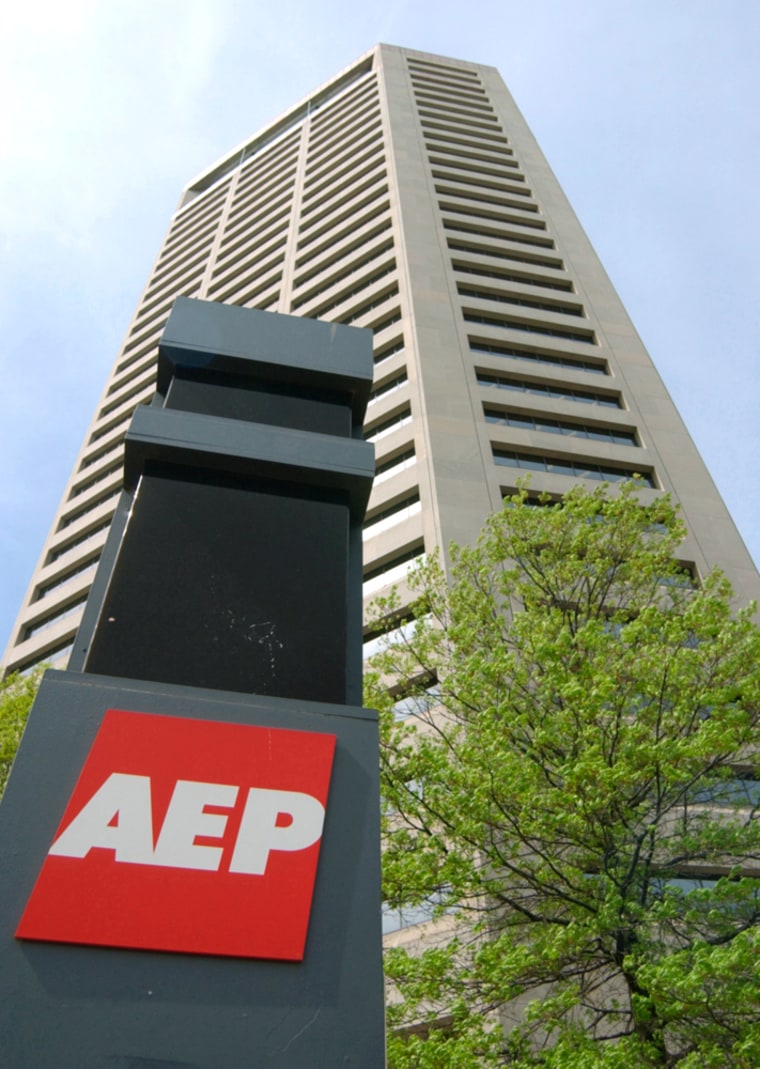One of the nation’s largest power generators on Tuesday said it had agreed to end a years-long federal lawsuit by investing $4.6 billion to reduce pollution that has eaten away at Northeast mountain ranges and national landmarks.
“Today’s settlement will save $32 billion in health costs per year for Americans,” Granta Nakayama, the Environmental Protection Agency's assistant administrator for enforcement and compliance, said in a statement. “Less air pollution from power plants means fewer cases of asthma and other respiratory illnesses.”
The EPA called it "the single largest environmental enforcement settlement in history by several measures. For example, it is the largest settlement in terms of the value of injunctive relief, and will result in the largest amount of emission reduction from stationary sources, such as power plants and factories."
The settlement requires American Electric Power, based in Columbus, Ohio, to reduce chemical emissions that cause acid rain by three quarters, or 810,000 tons a year, over the next decade.
It also fines AEP an additional $15 million in civil penalties and another $60 million in cleanup and mitigation costs to help heal parkland and waterways that have been hurt by the pollution.
The settlement marks one of the largest government fines in an environmental case. By contrast, Exxon Mobil Corp. estimates it has paid $3.5 billion in cleanup costs, government settlements, fines and compensation for the 1989 Exxon Valdez oil spill. The company is fighting an additional $2.5 billion in punitive fines.
Filed in federal court, the agreement settles a lawsuit against AEP brought by eight states, a dozen environmental groups and the EPA in 1999. They accused the energy company of rebuilding coal-fired power plants without installing pollution controls as required under the Clean Air Act.
The lawsuit was to have gone to trial on Tuesday.
Acid rain problems
The Sierra Club was among the plaintiffs. "AEP is operating some of the dirtiest coal-fired power plants in the nation," Sierra Club executive director Carl Pope said in a statement. "After years of trying to evade installing proper pollution controls, AEP is finally cleaning up their old power plants. The massive reductions in smog, fine soot and acid rain from these plants will profoundly benefit both public health and the environment."
Environmentalists blame acid rain caused by coal-fired power plants for plaguing the Northeast over the last quarter-century, including damage that has eaten away at the Statue of Liberty and the Adirondacks mountain range in upstate New York. Smog and acid rain have been linked to sulfates and nitrates that are products of coal-fired plants.
AEP has more than 5 million customers in 11 states. It has agreed to clean up 46 coal-fired operations in 16 of the plants in its eastern system — a group likely to include at least nine plants in Ohio, Indiana, Virginia and West Virginia.
AEP has maintained that the work done in at least some of its plants was routine maintenance that didn’t fall under federal requirements for pollution controls.
Other details of settlement
The settlement requires AEP to:
- Spend $4.6 billion on so-called scrubbers and other pollution controls to reduce emissions of nitrogen oxide and sulfur dioxide, which cause acid rain and smog. $2.6 billion of that has already been invested, AEP said Tuesday.
- Cut nitrogen oxide emissions by 69 percent by 2016, and reduce sulfur dioxide emissions by 79 percent by 2018.
- Pay civil fines of $15 million.
- Pay $60 million in mitigation measures. The money includes $21 million to reduce emissions from barges and trucks in the Ohio River Valley; $24 million for projects to conserve energy and produce alternative energy; and $3 million for the Chesapeake Bay, $2 million for Shenandoah National Park and $10 million to acquire ecologically sensitive lands in Appalachia.
Environmentalists said they still plan to keep an eye on how quickly AEP starts cleaning up its plants — or whether it drags its feet in complying with the settlement.
The eight states that brought the lawsuit, along with the EPA and environmentalists, are Connecticut, Maryland, Massachusetts, New Hampshire, New Jersey, New York, Rhode Island and Vermont.
The settlement does not deal with carbon dioxide emissions, which many scientists tie to global warming.
